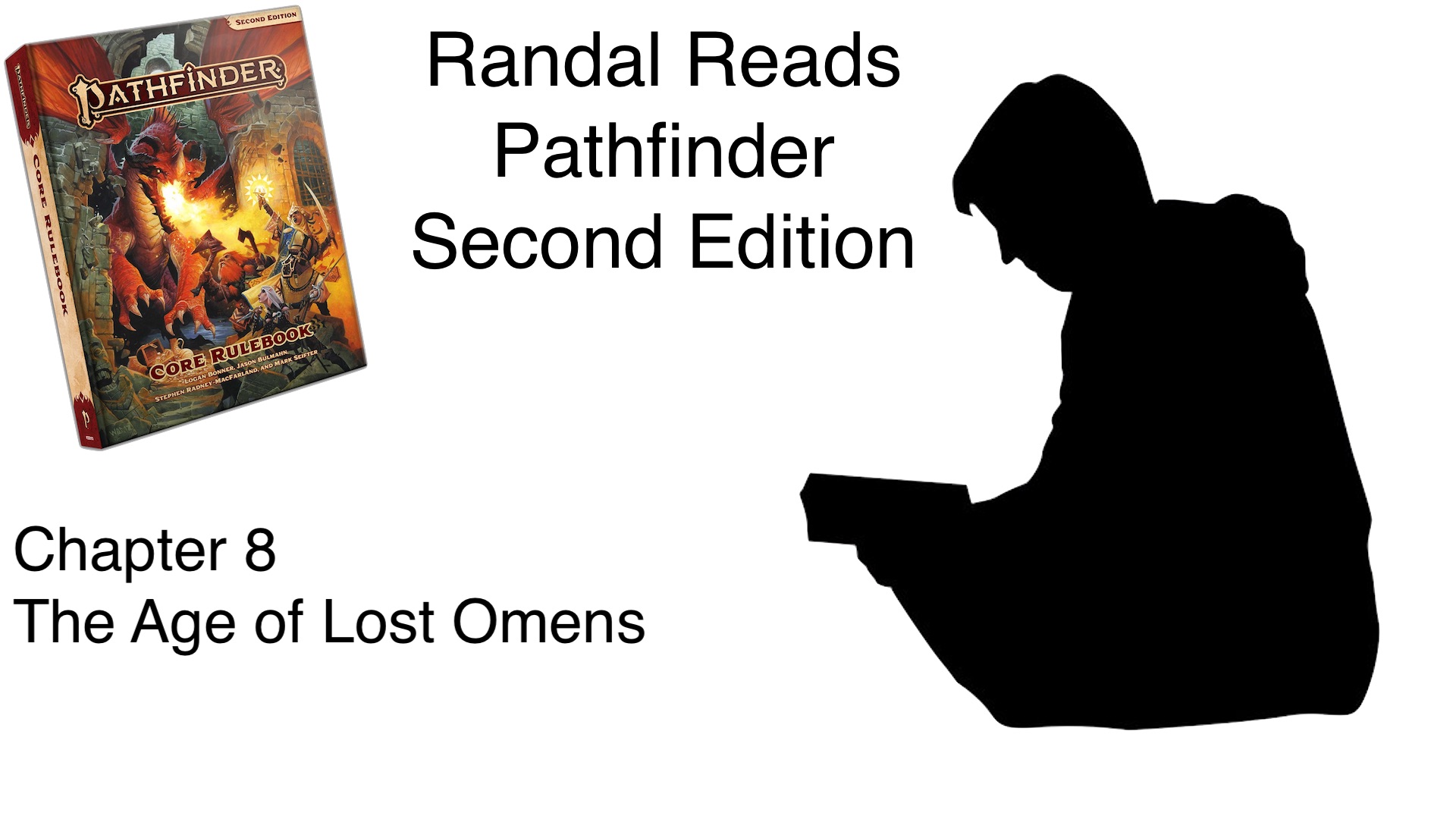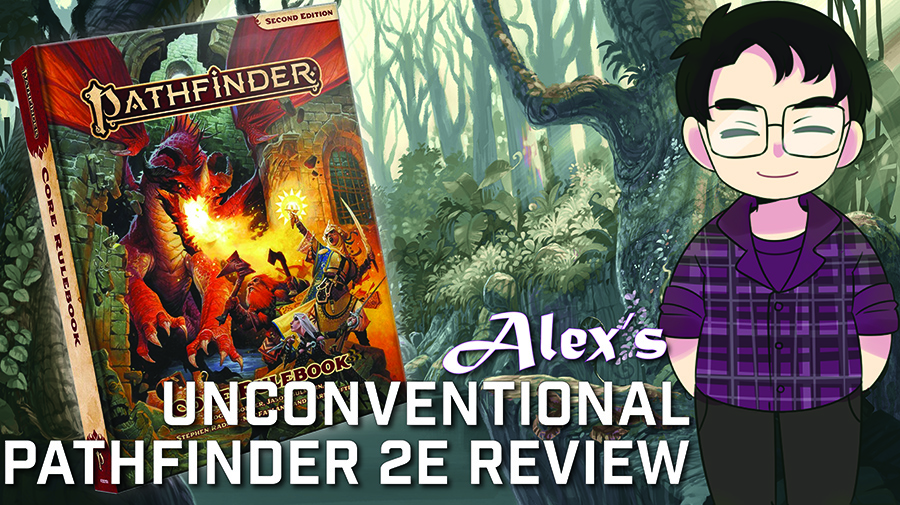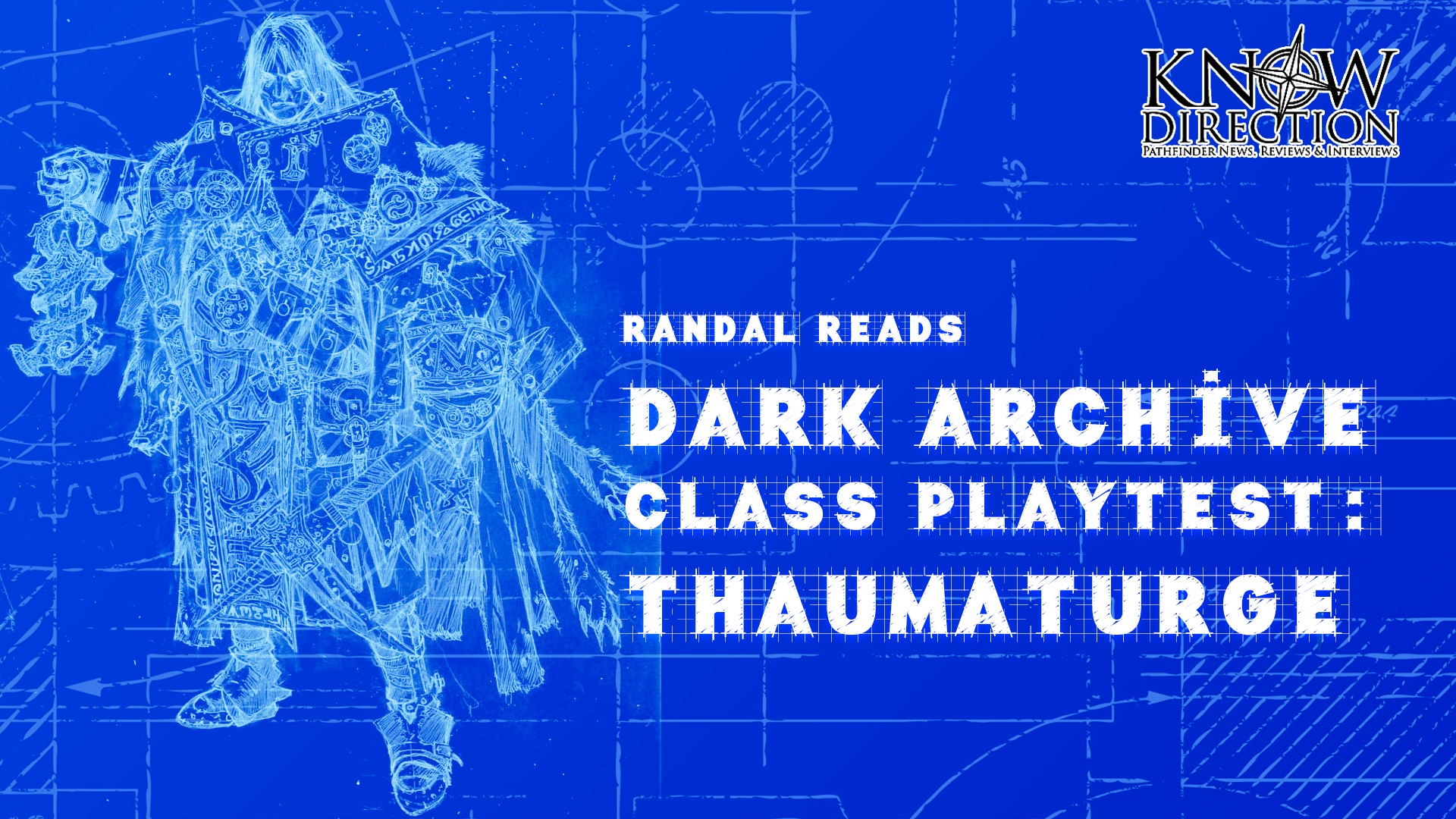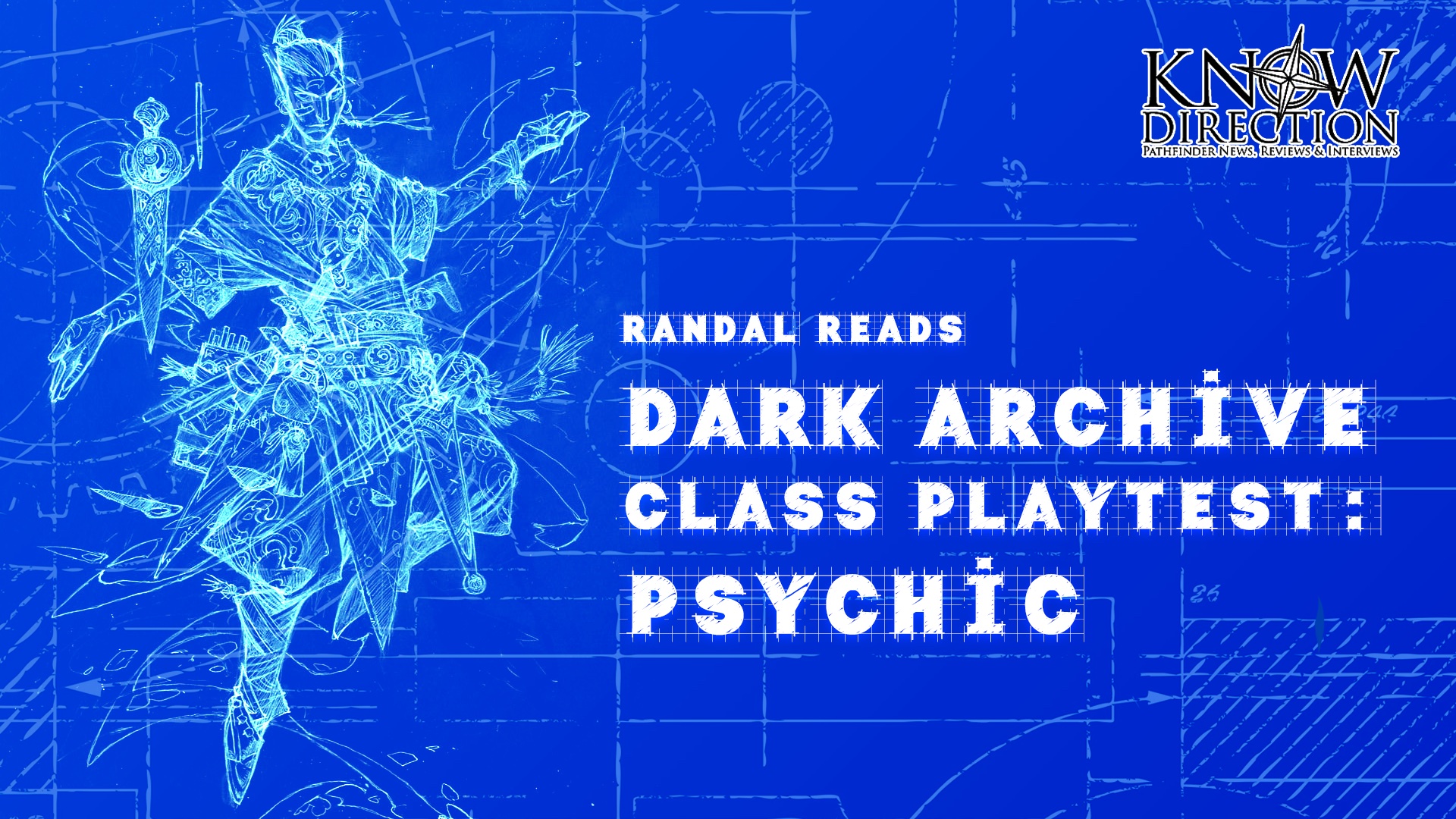Hello, and welcome to a special review of Pathfinder Second Edition. With most of the Know Direction team at Gen Con 2019, gluttonously consuming second edition in all its glory, most of our blogs are on hiatus. I, Randal, writer of Groundbreaking and Terraforming, am here to fill that void with a chapter by chapter review of the new core rulebook. This review is intended to simply be my take on the material as I read it, as first thoughts and impressions, and not a hard comparison of changes from first edition.
Chapter 9 – Playing the Game
This is the crunchy bit. Many of these details have actually been touched on earlier in the book, as they came up during other explanations. A single place with all of these rules is great for reference as well as double checking interactions between them. Most of the calculations that you are going to be doing have verbose descriptions and explanations complete with special formatting to draw your eye away from the rest of the blocks of text. This is great for cutting down on confusion, especially the math you are going to do on a regular basis, such as attacks, checks, saves, damage, etc. There are a two of tables that are super helpful, but also fairly small that you would do well to memorize: Proficiency Rank / Bonus and Multiple Attack Penalty. The choices for sidebars in this chapter seemed to cover those topics that I feel got many questions previously and are usually things that you just have to deal with a couple of times to understand them or might have slightly different rules than before and thus need extra clarifying (Fortune v Misfortune is an excellent example of one that can be confusing to many people). Less a sidebar, and more a “full page bar” was the condition summary, that I thought was a nice thing to have as a quick description of the conditions without the actual rules of the conditions. Knowing what it is that you are effected with/by is just as important as knowing how it affects you, especially if you want to get into your character’s headspace.
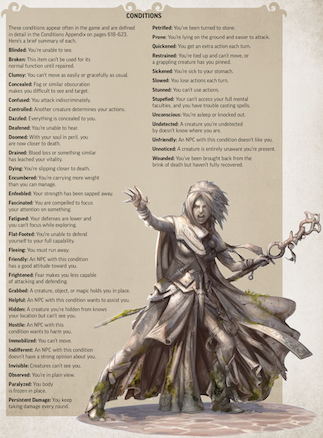
The first part of the chapter is broken out into subsections that seemed very thorough and easy to read and follow along. The coverage of checks was just shy of exhaustive, in my opinion. Everything made sense, didn’t seem to be convoluted, and all had relevant examples. The major topics covered by checks are:
- Checks
- Covers mods, bonuses, penalties, rolling, calculating, and determining success
- Specific Checks
- Covers attack rolls, spell attack rolls, perception, saving throws, skill checks
- Special Checks
- Covers flat checks and secret checks
The next sections covered Damage, Conditions, Effects, Afflictions, Counteracting, and HP/Healing/Dying. Damage types received a full page “sidebar” to discuss the distinction between physical, energy, alignment, mental, poison, bleed, and precision. It even calls out precious materials. I think this is going to be read and referenced a lot, and proof that they are highlighting the important bits.
Encounter Mode
![]() Encounters are explained in great detail, in a way that is easy to understand for new players. The layout and wording is also helpful for long time players that don’t have the greatest memory, especially when switching editions. I liked the change from breaking initiative ties to simply saying the enemy breaks ties and the players can choose among themselves. The breakdown of what happens at the beginning (decrease effect durations, “start turn” free/reactions, recovery rolls, other “start turn” actions, and regaining actions and reaction) and end (decrease effect durations that last until “end of turn”, persistent damage and flat check, affliction saves, decrease condition durations, “end of turn” free/reactions, other “end of turn” actions) of your turns was well explained. It covers the basic and specialty actions that aren’t specific to feats and skills, as well as reactions, oddly using a specific reaction “Attack of Opportunity”, likely because there aren’t currently any basic reactions. After, it covers size (space and reach) and movement a grid as well as terrain, flanking, cover and other aspects of combat. I noticed that their example of difficult terrain used a map in which I didn’t realize that the terrain was difficult until rereading to figure out why my math was wrong. I liked that they covered mounted, aerial, and aquatic combat.
Encounters are explained in great detail, in a way that is easy to understand for new players. The layout and wording is also helpful for long time players that don’t have the greatest memory, especially when switching editions. I liked the change from breaking initiative ties to simply saying the enemy breaks ties and the players can choose among themselves. The breakdown of what happens at the beginning (decrease effect durations, “start turn” free/reactions, recovery rolls, other “start turn” actions, and regaining actions and reaction) and end (decrease effect durations that last until “end of turn”, persistent damage and flat check, affliction saves, decrease condition durations, “end of turn” free/reactions, other “end of turn” actions) of your turns was well explained. It covers the basic and specialty actions that aren’t specific to feats and skills, as well as reactions, oddly using a specific reaction “Attack of Opportunity”, likely because there aren’t currently any basic reactions. After, it covers size (space and reach) and movement a grid as well as terrain, flanking, cover and other aspects of combat. I noticed that their example of difficult terrain used a map in which I didn’t realize that the terrain was difficult until rereading to figure out why my math was wrong. I liked that they covered mounted, aerial, and aquatic combat.
Exploration Mode
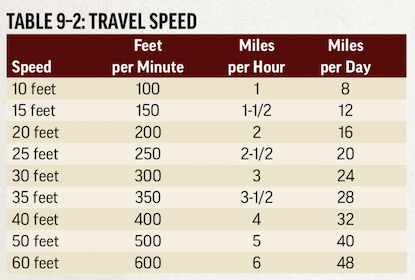 Short and sweet, this section was two pages that covered that things you can do as a player in exploration mode that hasn’t already been covered elsewhere. Listing the travel speed conversions for speeds 10 ft to 60 ft in feet per minute, miles per hour, and miles per day is a super handy table. The Exploration Activities not already covered by the Skills section include things like Avoid Notice (to sneak through an area) and Follow the Expert (an expert or better can let you add some of their training and your level to a check to perform an activity. Finally, it covers what takes place during daily preparations.
Short and sweet, this section was two pages that covered that things you can do as a player in exploration mode that hasn’t already been covered elsewhere. Listing the travel speed conversions for speeds 10 ft to 60 ft in feet per minute, miles per hour, and miles per day is a super handy table. The Exploration Activities not already covered by the Skills section include things like Avoid Notice (to sneak through an area) and Follow the Expert (an expert or better can let you add some of their training and your level to a check to perform an activity. Finally, it covers what takes place during daily preparations.
Downtime Mode
What to do to kill time. If Exploration was short and sweet, this is cavity forming. One page to go over all the details and intricate rules of downtime. Except that most of these things are covered elsewhere, so as the Skill checks for learning spells, earning income, and such. They just touch on Long-Term Rest (recover con times twice your level) and Retraining. Something about the rules calling out retraining needing a mentor or instructor when leveling up doesn’t seems arbitrary to me. I can only assume it is to add weight to the fact that you are changing something about your character, and perhaps because your character is supposed to have been practicing all along, and thus it can’t change overnight. I dunno, but I like that it exists within the context of the rules to ensure consistency in implementation.
Tune in tomorrow for Chapter 10 – Game Mastering


